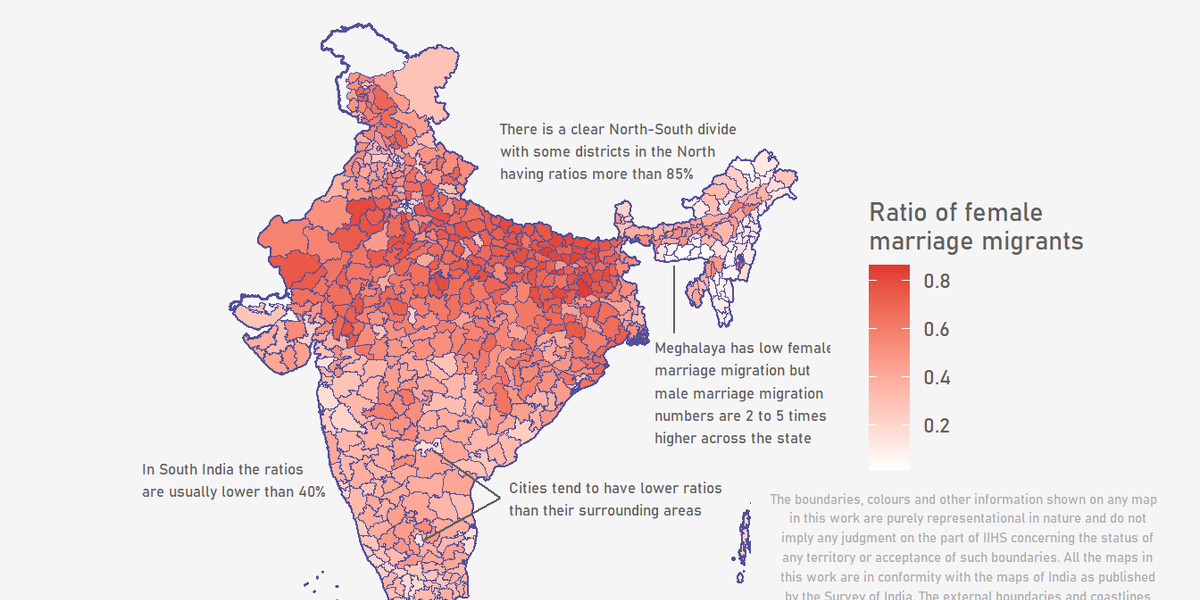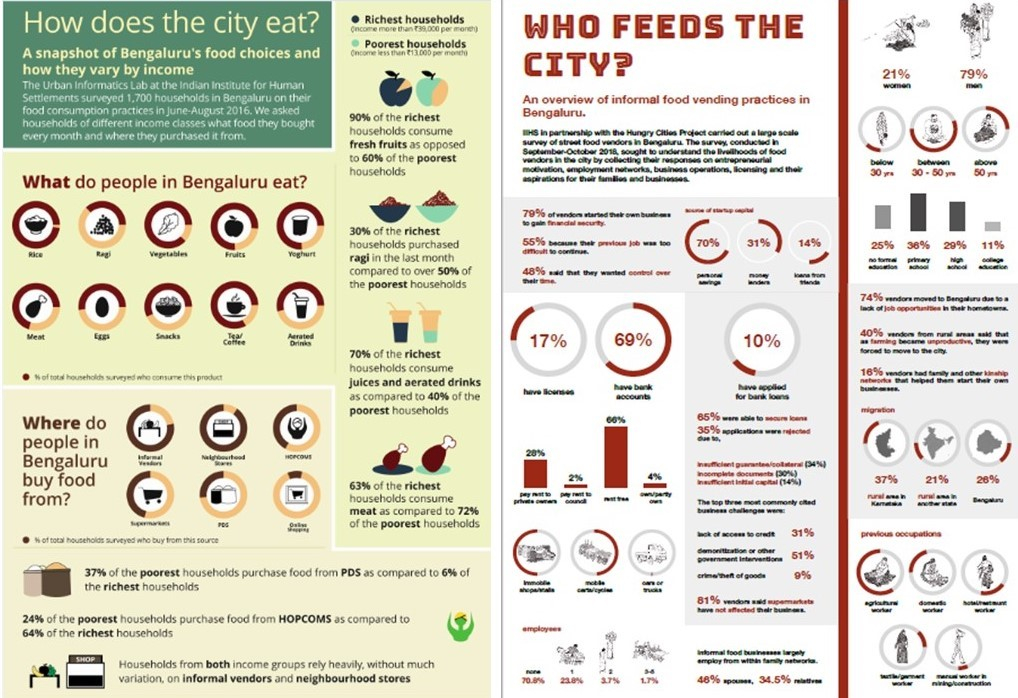
Colombia has the second-highest level of inequality in the Latin America region. Mauricio Quiñones Domínguez and Lina Martínez look at how social protection measures like subsidies are now out of date.

This blog was originally published as a post in the IIHS Research Monthly on 29 September 2021.
Access to and innovative use of relevant data is critical for researchers and practitioners studying emerging urbanism, particularly in cities of the global South. In an increasingly globalised world with interconnected knowledge-centric networks, there has been a steady move towards the use of big data and predictive modelling to study complex urban systems. Recognising this, select Labs at IIHS have developed innovative and grounded ways of engaging with and disseminating data-centric research. This work feeds into academic, research, pedagogic and training practices at IIHS.

(Infographics created for the Hungry Cities Project)
The Urban Informatics Lab (UIL) is a space within IIHS to aggregate, organise, design and share insights about our cities that arise from various information systems such as primary data collection and surveys, secondary data analysis and geospatial visualisation.
The Lab works across the Academics and Research, Capacity Building and Practice programmes at IIHS and provides analytical support to multiple ongoing projects such as ‘The Rajasthan Chief Minister’s Economic Transformation Advisory Council’ (CMETAC); GCRF-funded ‘Re-thinking the Off-Grid Cities’; and ‘India Data Cube’ among others, while building its own research portfolio. In particular, the Lab develops quantitative methods that can be applied to complex urban problems. Insights from this analysis are communicated through a variety of media to aid and improve the quality of discourse on India’s urbanisation. Some of these efforts are highlighted in this section.
As part of the PEAK-Urban project, to study the economic geography of the global South, UIL explored secondary datasets such as the Economic Census and the Periodic Labour Force Survey and published a set of short explainers accompanied by infographics. The explainers represented data on employment share in India; concentration of work in Manufacturing, Service, Micro Small and Medium Enterprises (MSME) and Construction sectors and the spread of non-agricultural workers across the country.
The Lab was part of the recently concluded Hungry Cities Partnership, a four-year project on the study of urban food systems in Bengaluru. As part of this, the team carried out two large-scale primary surveys and an ethnographic study on technology-enabled food supply chains and the traditional mandi system. Findings from this project have been published in several popular media outlets and academic journals such as the Environment and Urbanization’s special issue on food security.
The UIL is currently attempting to estimate district-level migration flows across India using Census migration tables.
The study, seeks to investigate the association between migration for work and economic factors at both origin and destination regions. Early findings indicate that a vast majority of the country’s migrants move within a state. Female marriage migration numbers point to a clear north-south across divide mainly due to greater inter-district marriage migration in North India and the relatively greater presence of other factors such as work and education that drive movement in South India. Findings from this study will be published shortly.
For more information on the Urban Informatics Lab, write to the team at urbaninformaticslab@iihs.ac.in
Viola recently published a set of short explainers and data visualisations in IndiaSpend that focused on employment and drew on insights from the Economic Census and the Periodic Labour Force Survey.